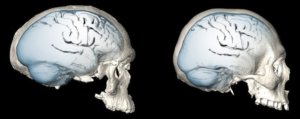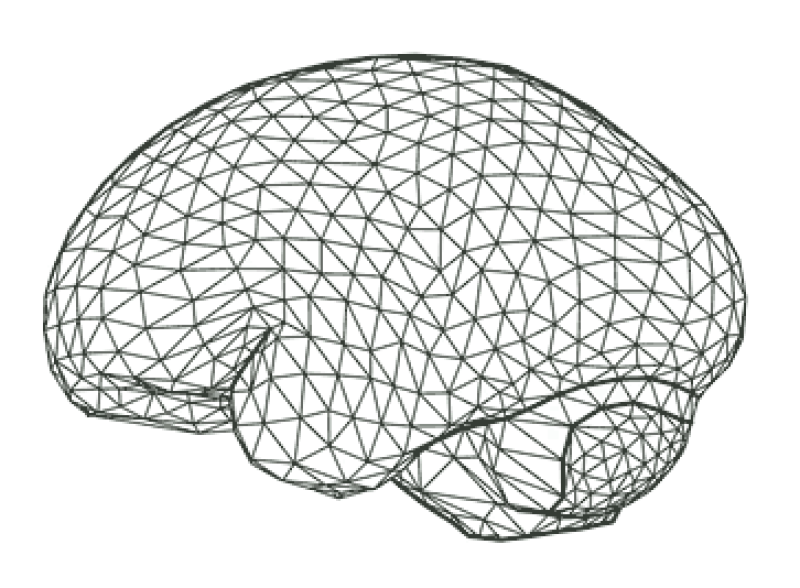In a study published [January 24] in Science Advances, researchers from the Max Planck Institute for Evolutionary Anthropology announced that the earliest Homo sapiens did not have globular brains like we have today. Instead, their brains had a shape intermediate between that of Homo erectus and that of the Neanderthals, both of which were somewhat more elongated horizontally. The brain, the authors write, gradually became globular over evolutionary time, and those changes in turn, induced neurological shifts that coincide with archaeological evidence of modern behavior.
…
To come to this conclusion, the team used tomographic scans and 3-D analysis to create virtual endocranial casts of 20 different Homo sapiens fossils.
…
They also created virtual endocasts — internal casts of the brain that approximate its size and morphology — of modern human samples to compare.
…
Globularity itself likely didn’t give us advantages, says [co-author Simon] Neubauer, but the features that contributed to the rounding probably did: the bulging of parietal areas and the bulging of the cerebellum. The parietal lobe is an important hub in connecting brain regions and is involved in functions like orientation, attention, and the sensorimotor transformations that underlie planning and visuospatial integration. Meanwhile, the cerebellum relates to motor-related functions, like balance, as well as integral functions like working memory, language, affective processing, and social cognition. It’s likely that the emergence of these skills prompted the “human revolution.”

Read full, original post: The Evolution of Round Brains Ushered in the ‘Human Revolution’































